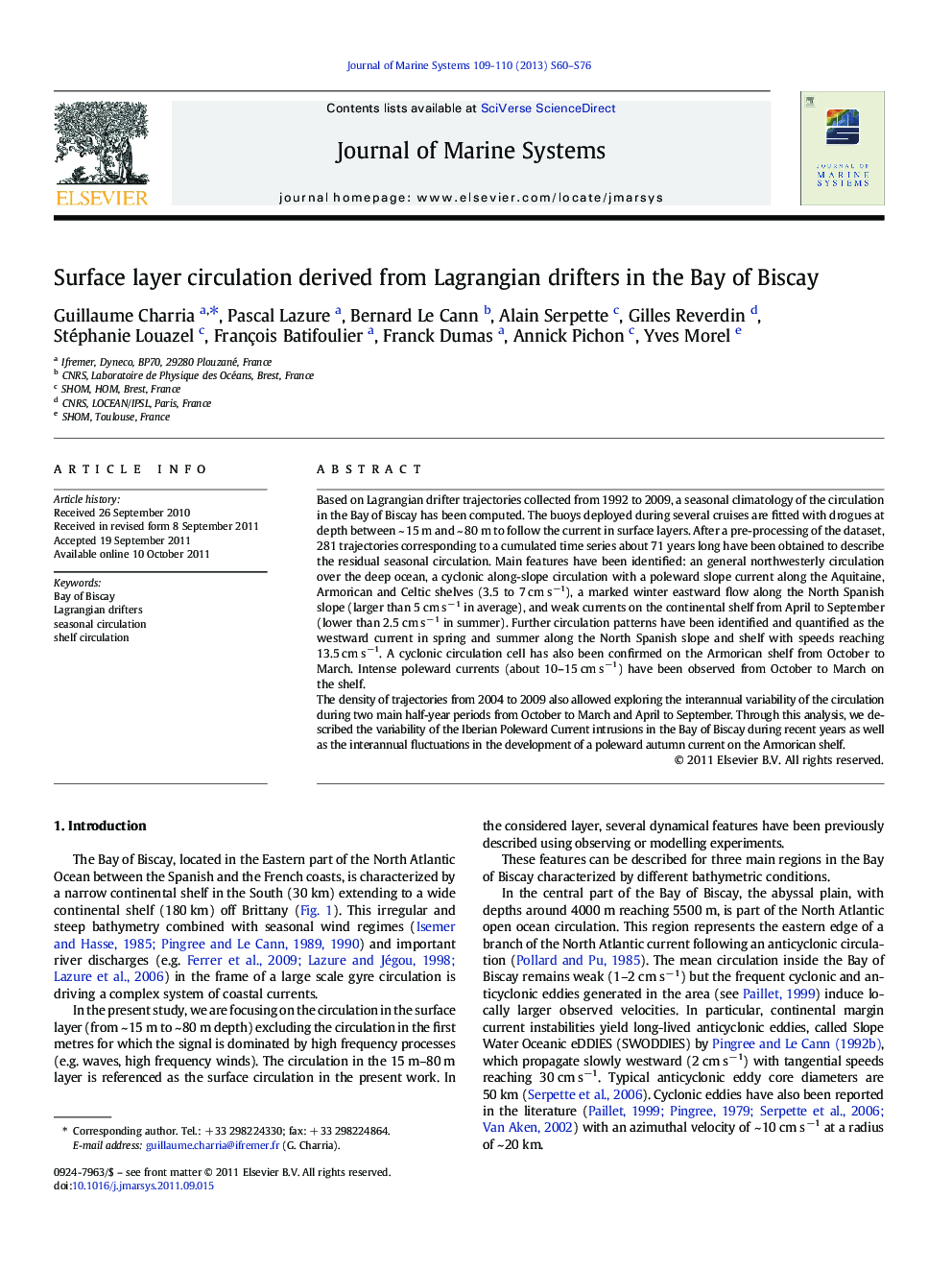| Article ID | Journal | Published Year | Pages | File Type |
|---|---|---|---|---|
| 4548196 | Journal of Marine Systems | 2013 | 17 Pages |
Based on Lagrangian drifter trajectories collected from 1992 to 2009, a seasonal climatology of the circulation in the Bay of Biscay has been computed. The buoys deployed during several cruises are fitted with drogues at depth between ~ 15 m and ~ 80 m to follow the current in surface layers. After a pre-processing of the dataset, 281 trajectories corresponding to a cumulated time series about 71 years long have been obtained to describe the residual seasonal circulation. Main features have been identified: an general northwesterly circulation over the deep ocean, a cyclonic along-slope circulation with a poleward slope current along the Aquitaine, Armorican and Celtic shelves (3.5 to 7 cm s−1), a marked winter eastward flow along the North Spanish slope (larger than 5 cm s−1 in average), and weak currents on the continental shelf from April to September (lower than 2.5 cm s−1 in summer). Further circulation patterns have been identified and quantified as the westward current in spring and summer along the North Spanish slope and shelf with speeds reaching 13.5 cm s−1. A cyclonic circulation cell has also been confirmed on the Armorican shelf from October to March. Intense poleward currents (about 10–15 cm s−1) have been observed from October to March on the shelf.The density of trajectories from 2004 to 2009 also allowed exploring the interannual variability of the circulation during two main half-year periods from October to March and April to September. Through this analysis, we described the variability of the Iberian Poleward Current intrusions in the Bay of Biscay during recent years as well as the interannual fluctuations in the development of a poleward autumn current on the Armorican shelf.
